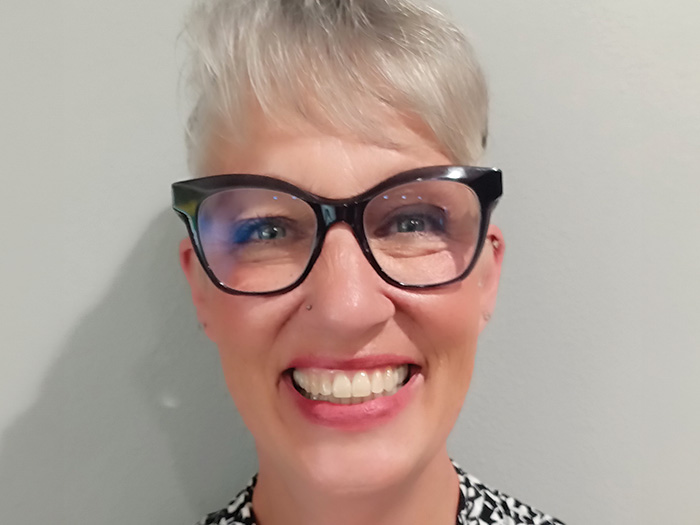Sponsored: Liberty Mutual Insurance
A Market in Transition: How to Manage Coverage Disparities as Carrier Appetites Curb

Broadly speaking, commercial insurance is experiencing what some experts see as a significantly transitioning market. Threats of recession, increasingly frequent and severe weather, supply chain problems, and labor market fluctuations are just some of the factors altering the appetites of insurance carriers and creating disparities in terms, pricing, and conditions.
“The [commercial insurance] industry’s traditionally been a bit cyclical,” said Kevin Smith, president, Global Risk Solutions (GRS) North America, Liberty Mutual. “When you’re in a hard market — which traditionally is tightening terms, higher pricing — you generally have a pretty high degree of consistency with markets.”
“In a soft market cycle, carriers tend to get a little more competitive — pricing gets softer, terms open up.”
As the current insurance market overall finds itself at the tail end of a firm market and enters a transitioning market, buyers may encounter more disparity across coverages and insurers, with marked differences in individual lines, appetite, and capacity.
It’s a complex situation, but buyers and brokers can find ways to navigate these inconsistent markets. By understanding the main drivers and key lines affected and partnering closely with their insurance carriers and brokers, businesses can develop appropriate risk mitigation strategies that help manage potential exposures and bridge pricing and capacity gaps.
Protecting Property as the Insurance Market Grapples with Accurate Valuations

Kevin Smith, President, Global Risk Solutions (GRS) North America, Liberty Mutual
Property coverage is a prime example of where the disparities in the market are very evident. “It’s a moving target that everybody’s trying to grapple with,” Smith said. “There’s still a lot of pressure in property for a whole host of reasons; the increased frequency and severity of severe weather being a major factor. So, there’s a compression taking place.”
And then there’s reduced capital in the property arena. “So, you’ve got an issue around capital coming in [and] around coverage. Reinsurance markets are pulling back on the perils that they’re covering to some degree, and the capacity they do put up, they’re charging more for.”
In addition to weather exposure, there are other factors impacting the property market. “You’ve [also] got the inflationary dynamics coming into play, some of the supply chain issues, and just the general cost,” Smith added. “If you are going to rebuild now, the cost of materials and everything else is going up as well.”
These factors are a key reason why having accurate property valuations is so critical.
“If property valuations are not assessed regularly, an organization’s property could be improperly insured and the coverage may be less than sufficient in the case of damage or disaster,” said Smith. “By maintaining accurate valuations, companies can better avoid gaps in coverage and financial hardship.”
Yet even with these challenges, carriers can help insureds put property risks into the proper context when they effectively utilize the historical claims data in their vaults, tap into predictive modeling resources, and apply their boots-on-the-ground experience to better understand the value of their customers’ businesses, help them avoid business interruptions, and manage rising costs.
Cyber Risk Controls Remain Paramount, Even as the Market Softens
Cyber is another key line in transition since many carriers and insureds have been stung by the ongoing barrage of ransomware attacks and other cyber breaches.
“The industry saw double- and triple-digit price increases over the last year and a half to two years,” Smith said. “Now that’s more or less flat. So, that’s a pretty big change in the cyber market.”
Even with this adjustment in pricing, cybersecurity continues to grow more complicated — and risky —for businesses.
In 2022, the U.S. saw a 57% overall increase in cyberattacks, as compared to 2021, when global cyberattacks increased by 38%. And health care organizations were especially vulnerable: More cyberattacks breached their safeguards in 2022 than in all other industries.
“The business world has evolved from the thought being ‘We will never have a breach’ to the reality being that one, anybody can get breached, and two, the probability is pretty high,” Smith said. “At some point, your organization is likely to experience a breach.”
It’s easy for any organization struggling to balance its labor shortage, operational costs, and other competing priorities to become lax about cyber hygiene. And as businesses look to increase efficiency and cut costs, they are relying more on cloud and other third-party service providers — which reduces their ability to manage all aspects of their cyber footprint and can lead to increased risk.
But proactive cyber risk management planning can make a difference in reducing related risks. Smith said companies should make sure they have solid “blocking and tackling” cybersecurity protocols and offer regular employee refreshers on how to protect data and guard against phishing and other cyber schemes. Doing due diligence to properly vet third-party vendors is also critical.
“In our cyber offering, we can provide pre-breach and post-breach services,” Smith said, “whether it’s multifactor authentication or end-of-life systems, where you’ve got antiquated technology that’s susceptible to a breach — there are fundamental things we can advise on and help businesses implement to better protect themselves and help reduce their cyber exposure.”
“Given this transitioning market and challenging risk landscape, it has never been more important for buyers to partner with an insurer that can help identify the exposures they face and develop wholistic solutions to mitigate those risks.”
— Kevin Smith, President, Global Risk Solutions, North America, Liberty Mutual
Connecting the Tangential Points of Coverage to Manage Total Cost of Risk
Of course, property and cyber are just two among a growing number of risks insureds are striving to keep an eye on in today’s market. “There’s really tangential points across all lines,” Smith said. “Given this transitioning market and challenging risk landscape, it has never been more important for buyers to partner with an insurer that can help identify the exposures they face and develop wholistic solutions to mitigate those risks.”
However, with so many risks to consider — from the ripple effects of geopolitical tensions to rising inflation —risk management teams may feel like they have to come up with complicated risk management solutions that are all encompassing and cover a myriad of potential exposures, said Smith.
“Surely, we’ve got to think big, but so much of success in this market is about understanding and prioritizing risk, and the day-to-day combat of mitigating evolving exposures by focusing on the fundamentals.”
From casualty to property, Smith said, his team helps insureds identify the specific risks they face and develop strategic plans for mitigating those exposures. “We’re strong proponents of risk control and risk engineering — going out and doing risk assessments to make sure there’s fundamental and adequate controls in place to help prevent the events that spark claims,” Smith said.
“And this applies to all lines: ergonomic work, doing slip-and-fall reviews, evaluating fire controls – these are important actions to take to help mitigate risk and claims.”
Then they verify that insureds understand their total cost of risk.
“If an insured is going to build a new factory or a manufacturing plant,” Smith shared, as an example, “where do you want to put that factory or that manufacturing plant? Are there things that can be thought of in terms of a property exposure? Do you want to build it in an area that’s more prone to catastrophes or can you think about maybe building that in other areas?”
These are all questions Smith said are vital to helping insureds succeed in their efforts to chart the steadiest course forward in today’s heightened risk environment.
“So, working with them as they navigate those particular exposures — coming at it through an insurance lens — because it’s not just making their risk better, but how do we overall aid them in managing and controlling their total cost of risk?” Smith said.
There’s also thinking beyond exposures, Smith said. “How can we also help them become more ‘risk-aware,’ as opposed to ‘risk-averse’? So how do we become a problem-solver and work closely with our insureds to identify exposures and jointly come up with potential solutions?”
Whether it’s underwriting, client service, or risk control, the partnership between insureds and their carriers is a joint effort. “If we can help them be a better risk, it’s better for us — [there’s] lower probability of loss for us and less disruption to them.
“If you go through a cyber breach,” for example, Smith said, “it’s incredibly disruptive. A fire loss or a loss in a storm on the property side is very disruptive; litigation can be very disruptive. So, anything we can do to mitigate that aggregate risk, we all win. That’s how we like to think through things — not only through an underwriting lens but through a risk control lens as well.”
To learn more, visit: https://business.libertymutual.com/
This article was produced by the R&I Brand Studio, a unit of the advertising department of Risk & Insurance, in collaboration with Liberty Mutual Insurance. The editorial staff of Risk & Insurance had no role in its preparation.










